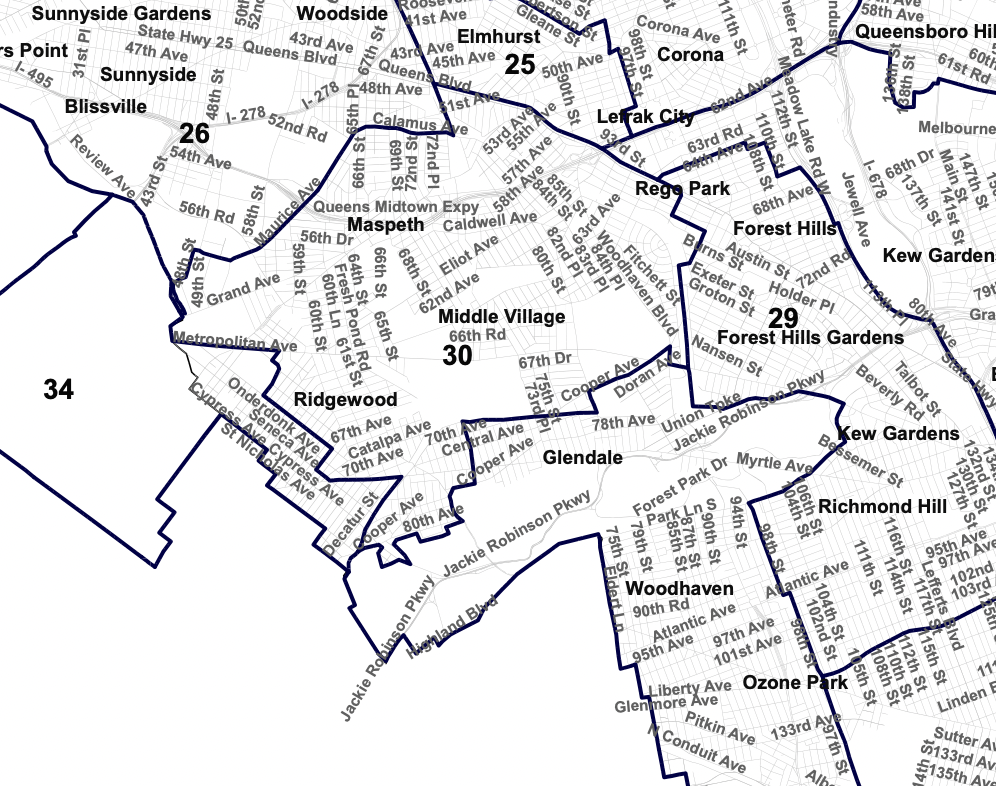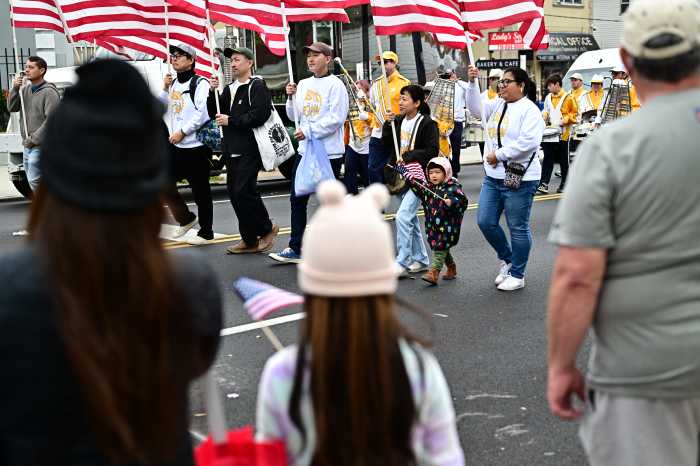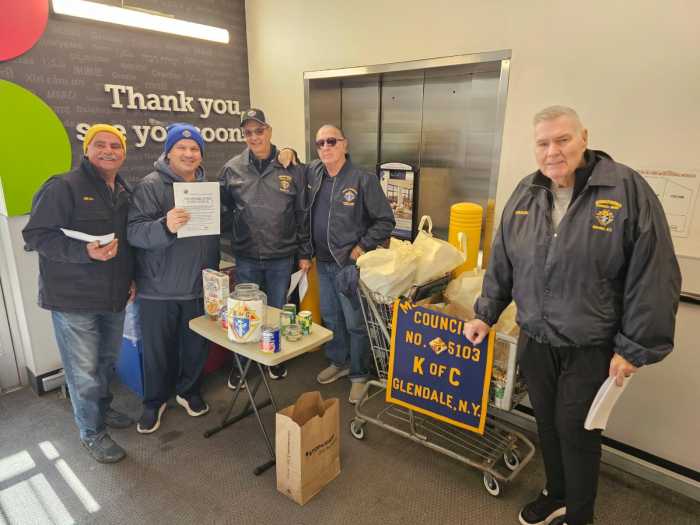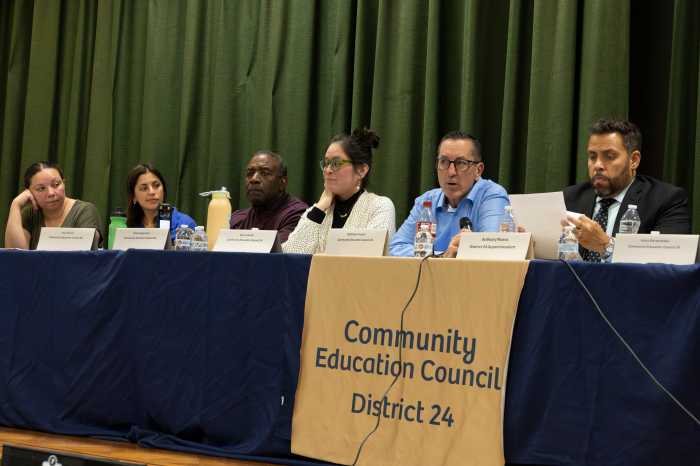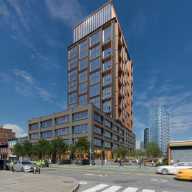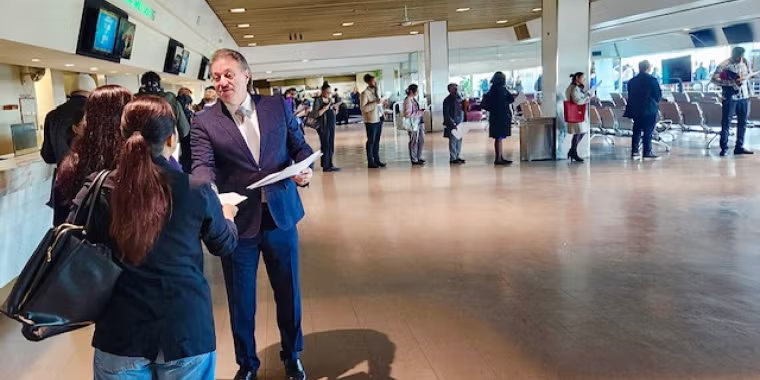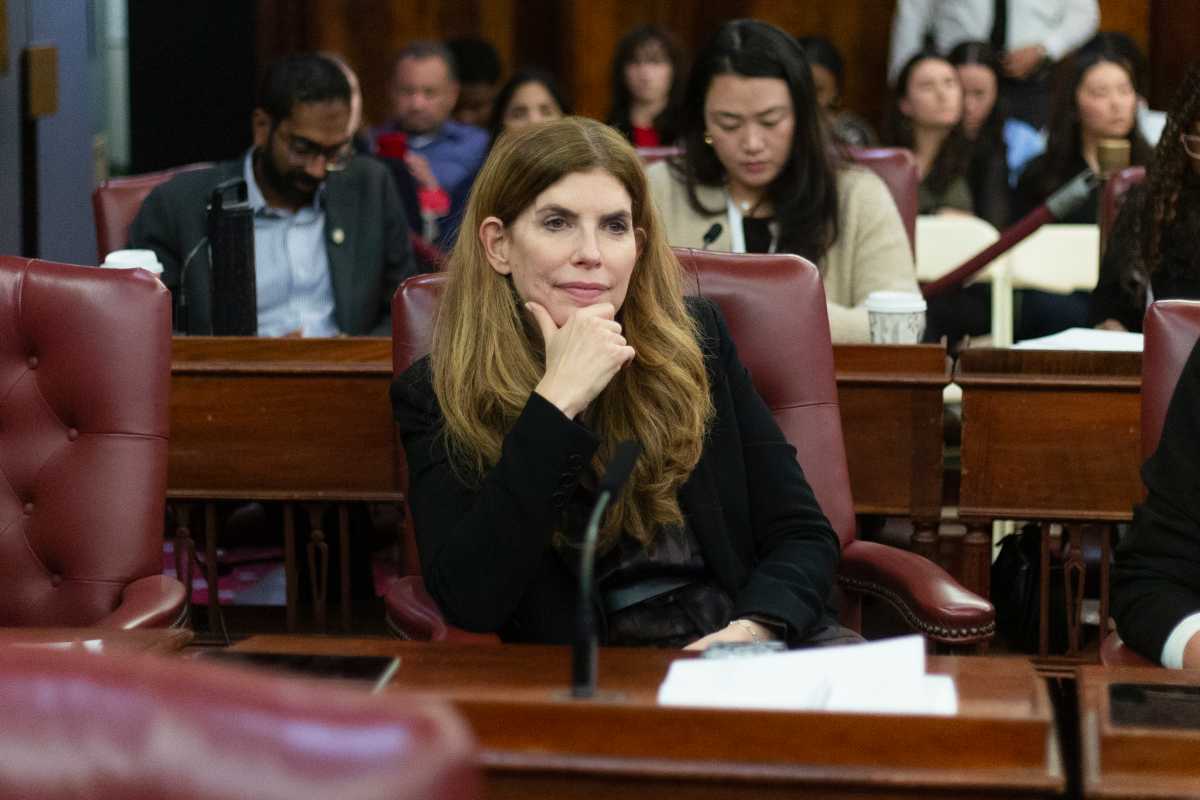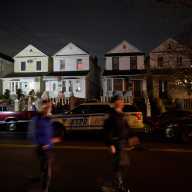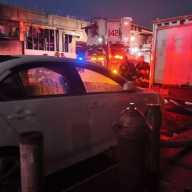New City Council district maps, if approved, will split Glendale in two, prompting push back from local Councilman Robert Holden and the Glendale Civic Association, who argue it will disenfranchise residents in the area.
New districts must be redrawn every 10 years after a census is taken. The new map is supposed to more accurately represent the changing demographics and population in the city, which increased from 8.2 million people in 2010 to 8.8 million people in 2020.
The New York City Districting Commission, a committee appointed by the mayor and City Council, has been tasked with redistributing the city’s population evenly without diluting votes in accordance with various laws.
In early October, the commission approved the new districts in a 13-1 vote.
In Glendale, the latest map would split the community, keeping parts of it in District 30 and grouping the other area with District 32.
District 30 Councilman Robert Holden takes severe issue with this map, arguing it will split the community not only geographically but also politically, which would effectively dilute an otherwise united Glendale with similar beliefs, interests and needs.
“I’m more worried about the future. Glendale now for at least a decade will be split in two,” Holden said.
“It’s troublesome; no elected official will have all of Glendale. It’s going to be fragmented, and any time that happens it disenfranchises the residents.”
Holden said he will now represent maybe a third of Glendale with this proposed map. The rest of Glendale will be grouped with southern Queens neighborhoods like Woodhaven, Ozone Park, Howard Beach and the Rockaways.
Holden argued this would be detrimental to Glendale, as that community has a completely different set of issues than other areas like Rockaway Park.
“They’re not going to get the representation they need; they don’t have the same issues,” Holden said. “The 32nd has a lot of issues with coastal issues, which Glendale doesn’t have. That district is very long and just made it longer. I blame the redistricting commission; I think they screwed up.”
Holden also mentioned his district has the largest Polish population in the city. He argued that with Glendale’s growing Polish-speaking population, splitting the community violates violates Section 52(b) of the New York City Charter, Section 17-206 of the John R. Lewis Voting Rights Act of New York and the Voting Rights Act of 1965.
Greg Fryc, a Glendale resident and longtime Polish activist, said that his community has deep roots in District 30.
“For the Districting Commission and New York City Council to approve the division of the largest Polish population in the city is not only a slap in the face to hardworking Polish taxpayers, but could also be a violation of several laws,” Fryc said. “The Polish people deserve to have their voices heard in local elections, and have every right to vote for the representative of their choice.”
Katherine Masi, president of the Glendale Civic Association, said that she is also extremely disappointed with the newly drawn maps.
“I’m worried about school funding, the Glendale homeless shelter, parks — I mean we’re just going to get our resources cut or diluted,” Masi said. “Holden has been very generous with Glendale.”
Masi said this division will result in a huge hit to public funding, especially for local parks and schools. Masi said that her feelings are no reflection on Councilwoman Joann Ariola, who may become her new representative.
“She’s a great councilperson, but, she doesn’t know us,” Masi said. “As good as she is, I don’t think her allegiance would be as strong as Holden’s is to Glendale.”
Masi said it is possible that she would explore a lawsuit to overturn these maps and make Glendale whole.

